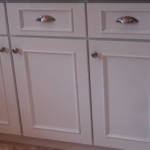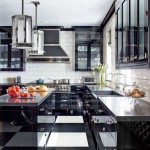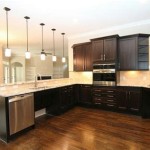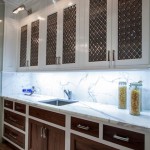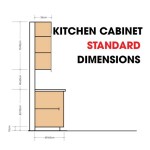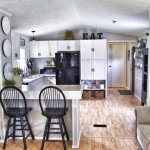Modern Crown Molding for Kitchen Cabinets
Crown molding adds a touch of elegance and sophistication to any kitchen. When chosen and installed correctly, it elevates the visual appeal of cabinetry, creating a polished, finished look. Modern crown molding options offer homeowners a diverse range of styles beyond traditional ornate designs, allowing for greater flexibility in achieving desired aesthetics.
Traditional crown molding often features intricate carvings and elaborate profiles. Modern interpretations, however, tend towards cleaner lines, simpler shapes, and a focus on geometric forms. This minimalist approach complements contemporary kitchen designs, offering a streamlined and uncluttered appearance.
The choice of material significantly impacts the overall look and durability of crown molding. Wood remains a popular choice, offering a timeless appeal and the ability to be stained or painted to match existing cabinetry. Common wood species include pine, oak, maple, and cherry, each offering unique grain patterns and characteristics.
Medium-density fiberboard (MDF) is a cost-effective alternative to solid wood. It provides a smooth, consistent surface ideal for painting and resists warping and cracking. MDF is a popular choice for modern designs due to its ability to achieve clean, sharp lines.
Polyurethane molding offers another lightweight and durable option. It is resistant to moisture and insects, making it a suitable choice for kitchens prone to humidity. Polyurethane molding comes pre-primed and is readily available in a wide variety of profiles, simplifying installation.
Plaster molding provides a high-end, custom look. It can be molded into intricate shapes and designs, allowing for unique and personalized details. While plaster offers design flexibility, it requires professional installation and is more susceptible to damage compared to other materials.
When selecting crown molding, consider the existing architectural style of the kitchen. A simple, single-piece molding complements minimalist and contemporary kitchens. More elaborate profiles with multiple layers can enhance traditional or transitional designs. The scale of the molding should also be proportionate to the size of the cabinets and the overall room dimensions. Overly large molding can overwhelm a small kitchen, while undersized molding can appear insignificant in a larger space.
Proper installation is crucial for achieving a professional finish. Accurate measurements and precise cuts are essential. Joining pieces seamlessly requires specialized tools and techniques, such as miter saws and coping saws. Adhesive and finishing nails secure the molding to the cabinets, ensuring a secure and long-lasting installation. Caulking fills any gaps and creates a smooth, cohesive appearance. The final step typically involves painting or staining the molding to match the existing cabinetry or create a contrasting accent.
Beyond enhancing aesthetics, crown molding can also serve a functional purpose. It can help conceal gaps between the cabinets and the ceiling, creating a more polished and seamless transition. This is particularly useful in older homes where ceilings may be uneven or where cabinets may not perfectly align with the ceiling line.
Incorporating lighting into crown molding adds another layer of sophistication and functionality. Installing LED strip lights within the molding creates a soft, ambient glow, highlighting the architectural details and enhancing the overall ambiance of the kitchen.
The cost of crown molding varies depending on the material, size, and complexity of the profile. Wood molding tends to be more expensive than MDF or polyurethane. Intricate designs and custom profiles also add to the overall cost. Installation costs can vary depending on the complexity of the project and the experience of the installer.
Maintenance requirements for crown molding are relatively minimal. Regular dusting and occasional cleaning with a damp cloth are typically sufficient. Wood molding may require periodic refinishing to maintain its appearance. Polyurethane and MDF molding are generally more resistant to damage and require less frequent maintenance.
Modern crown molding offers a wide range of possibilities for enhancing the aesthetic appeal of kitchen cabinets. From sleek and minimalist designs to more elaborate profiles, there are options to suit every style and budget. Careful consideration of material, size, and installation techniques will ensure a professional and long-lasting result, elevating the overall design of the kitchen.
By exploring different profiles, materials, and installation techniques, homeowners can achieve a customized look that reflects their personal style and enhances the overall value of their kitchen.

Grey Kitchen Cabinet Modern Crown Molding

Crown Molding For Shaker Kitchen Cabinets

Kitchen Design Details Learn About Crown Molding On Cabinetry

11 Kitchen Cabinet Crown Molding Ideas For Your

68 Crown Molding Ideas And Designs For Any Room In 2024 Modern Home Furniture House Design Software

Adding Crown Molding To Kitchen Cabinets Young House Love

The Crown Molding On Cabinets Is A 3 Piece Detail That Provides Clean Kitchen Modern Moulding

Choosing Kitchen Cabinet Molding American Wood Reface

Modern Crown Molding Designs Kitchen Contemporary With Recessed Lighting Stainless S Cabinet Cabinets Decor Dark

Kitchen Crown Molding And Refacing Options

